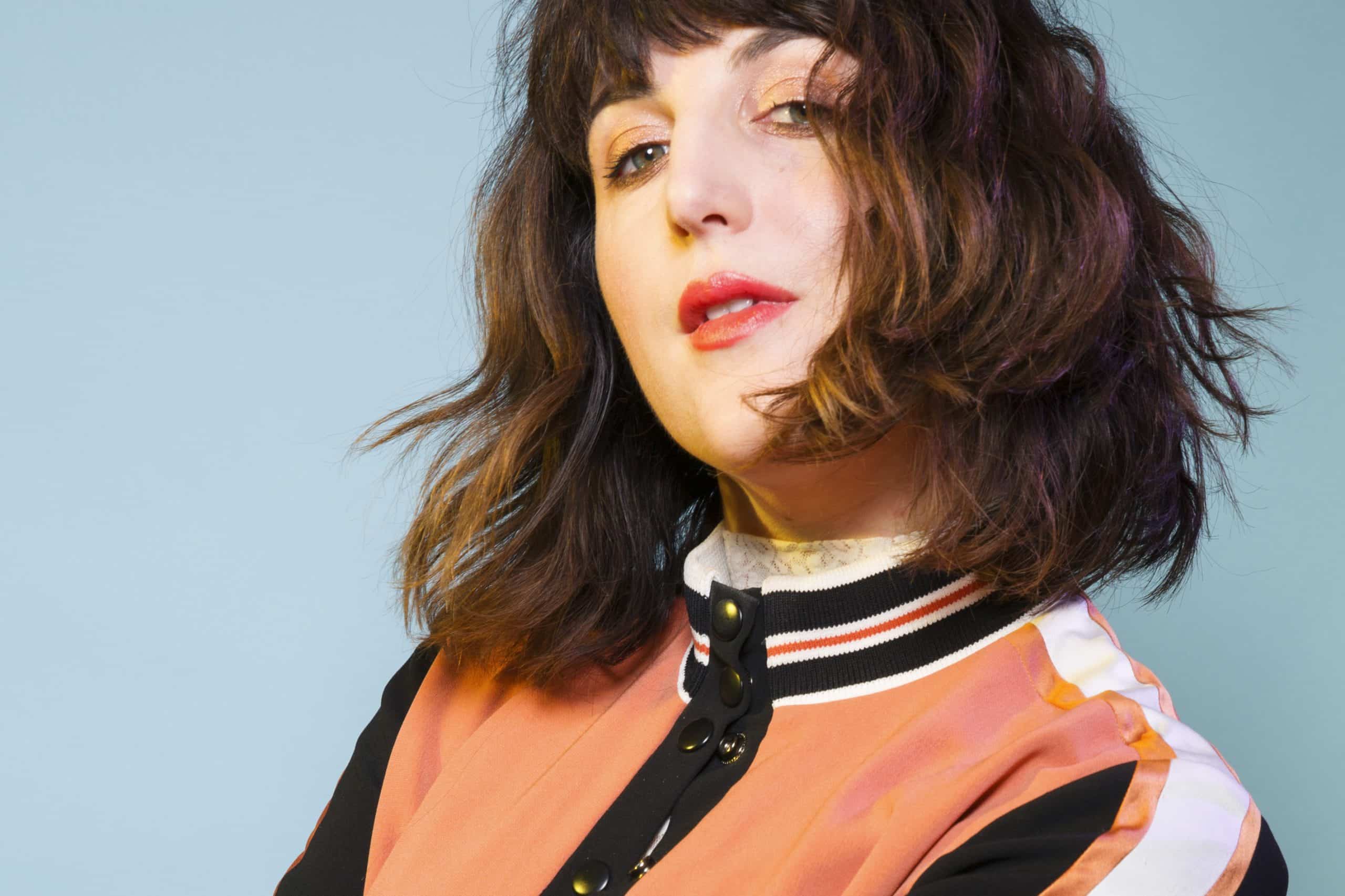Como co-fundadora da Refinery29, a diretora criativa Piera Gelardi passou os últimos treze anos construindo a marca do zero. Fundada em 2005, a Refinery começou como uma revista de moda e design com foco em Nova York. Com a expansão de seu público, a Refinery29 mudou de foco para se concentrar no crescente número de leitoras, acrescentando cobertura de notícias, além de beleza e bem-estar.
"Ao crescer, fui muito inspirado por Atrevido revistaque eu adorava porque sentia que um grupo de mulheres jovens, inteligentes, interessantes e legais estava falando diretamente comigo. Nunca me identifiquei muito com as publicações mais tradicionais", diz Gelardi. Atrevido foi uma publicação para adolescentes do início dos anos 90 com um toque indie; sua editora fundadora, Jane Pratt, criou a xoJane. O que define Atrevido O que diferenciou a Refinery29 do resto das revistas foi sua recusa em estabelecer regras de moda, e a Refinery29 também busca essa sensação de não sermos como as outras revistas. "Queríamos ser inteligentes, mas também relacionáveis", diz Gelardi. De acordo com a Refinery, a marca agora atinge um público de mais de 500 milhões de pessoas. Recentemente, eles abriram escritórios internacionais em Londres e Berlim, e seu evento anual ao vivo 29Rooms atrai um público cada vez maior em Nova York e Los Angeles.
A sensação de que as revistas de moda convencionais não são realmente para você é familiar para muitas mulheres, talvez até para a maioria delas, especialmente para aquelas que não são ricas, brancas ou magras. A marca Refinery29 passou a ser definida por uma oposição a esse sentimento de exclusão, representando o maior número possível de perspectivas femininas diferentes. Quando a Refinery começou a cobrir política com um enfoque feminino, foi inicialmente recebida com críticas. Era "provavelmente uma forma de sexismo", diz Gelardi. Algumas pessoas diziam: "Que direito você tem, ou que credibilidade você tem, para fazer essas coisas? Mas eu não sei. Nós apenas mantemos a bagunça e misturamos tudo."
Na Refinery29, a representação diversificada pode significar qualquer coisa, desde artigos de opinião desafiando estereótipos muçulmanos até listas sobre os melhores batons para pele escura. Seu trabalho contínuo Projeto 67%, cujo nome se deve à porcentagem de mulheres americanas consideradas plus size, explora uma série de tópicos a partir de uma perspectiva inclusiva de tamanho. Seu livro amplamente lido Diários de dinheiro explorar como as mulheres de várias faixas de renda gastam seu dinheiro.
Apesar desse escopo amplo, a Refinery29 mantém uma estética instantaneamente reconhecível. Como diz Gelardi, essa consistência é o produto de uma equipe que está sempre colaborando para trazer à tona a inspiração em novos lugares. Entramos em contato com ela para saber mais sobre seu trabalho como diretora de criação, os desafios de ser uma fundadora e por que ela sempre reserva tempo para o café da manhã.
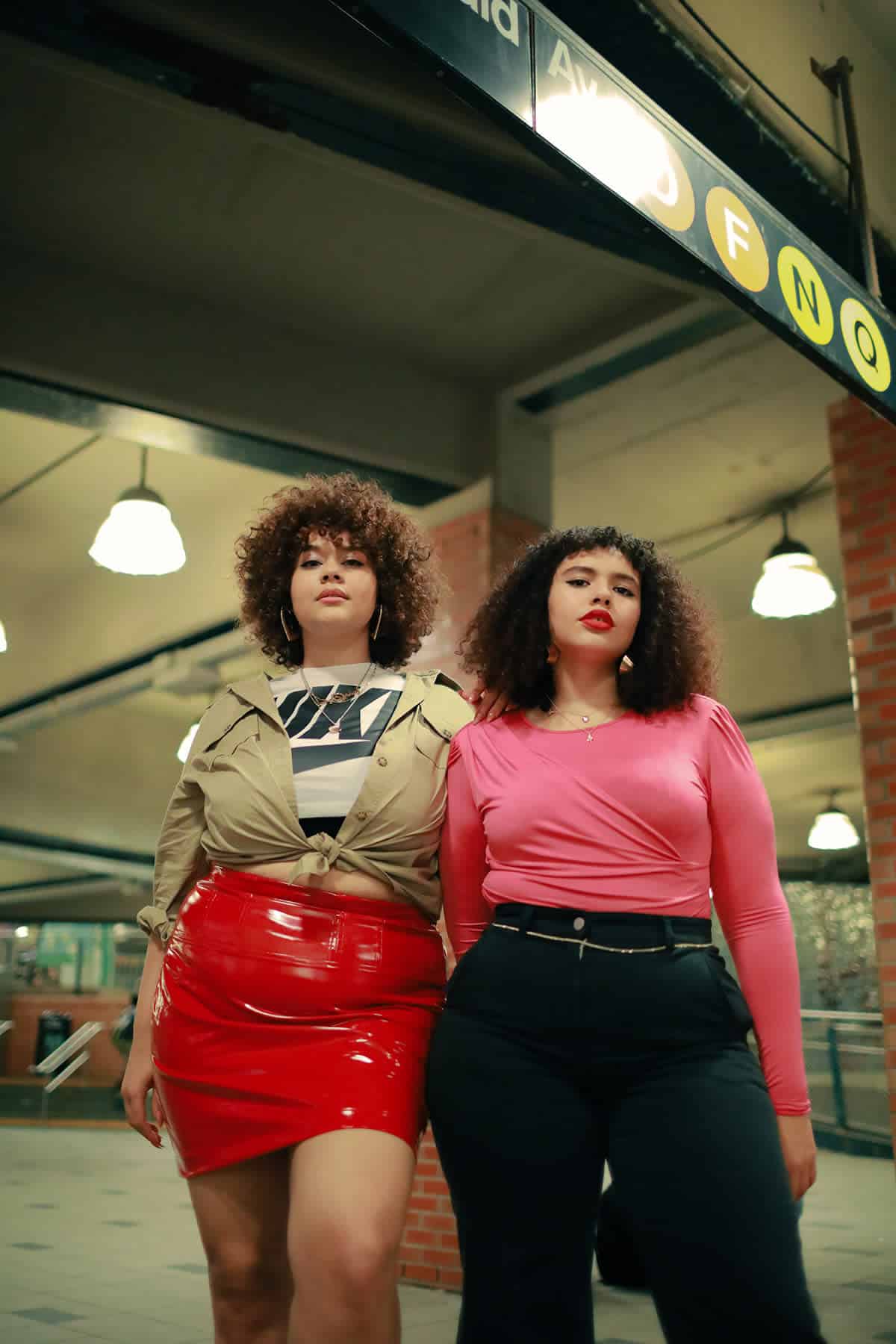
Foto de Renell Medrano para o projeto 67% da Refinery29.
Revista Format: Sempre noto que o conteúdo de vocês é muito diversificado. Como você faz para priorizar a diversidade quando se trata de criação?
Piera Gelardi: Para mim, trata-se de reforçar a diversidade em nosso conteúdo várias e várias vezes. Às vezes me sinto como um disco arranhado, mas dizem que as pessoas às vezes precisam ouvir as coisas sete vezes para que elas sejam registradas. Tento dizer isso de maneiras diferentes e destacar os comentários dos leitores, nos quais eles falam sobre o quanto é significativo para eles serem representados no conteúdo - o que isso significa para eles.
À medida que começamos a crescer e a produzir um volume tão alto de conteúdo, tivemos que começar a depender, até certo ponto, de fotografias de banco de imagens. No entanto, o cenário de banco de imagens não tinha a diversidade que estávamos procurando. E também não tinha a direção de arte que refletia nossa marca. Então, há cerca de oito anos, começamos nosso próprio arquivo de banco de imagens. Estamos construindo isso nos últimos oito anos.
Começamos fotografando funcionários e depois fazendo casting de rua. Tínhamos cartões que distribuíamos nos metrôs, nas ruas, em shows ou onde quer que as pessoas estivessem, que eram chamadas para modelos. Percebemos que nosso público realmente gostava de ver mulheres que não eram modelos tradicionais em nosso conteúdo. Por isso, fazemos castings em uma grande variedade de lugares e também fazemos muitos castings no Instagram.
Usar esse banco de dados de elenco tem sido muito importante, e continuamos a nos educar sobre o que é inclusão. Também pensamos muito não apenas em quem está representado nas imagens, mas em quem está criando as imagens, o conteúdo, a narrativa. Esse também tem sido um grande foco para nós. 78% de nossos fotógrafos são mulheres. Nós realmente tentamos contratar diversas mulheres - com tudo, desde 29Rooms a sessões de fotos e ilustradores - e estamos sempre pensando em quem está tendo a oportunidade de contar suas histórias. Porque o talento é distribuído igualmente, mas as oportunidades não são.
Acabamos de fazer esse laboratório de escritores da RIOT. TUMULTO é a nossa plataforma de comédia para mulheres, e entramos em contato com diferentes escolas de comédia e estabelecimentos de comédia e recebemos uma chamada para inscrições de escritoras de comédia. Depois, nós as colocamos em contato com escritores consagrados do SNL e de outros lugares e fizemos esse workshop de comédia. Uma das finalistas está conseguindo um programa na TBS.
Ver essas fitas de audição foi incrível. Isso me fez perceber, de forma tão visceral, a enorme oportunidade que tínhamos. Muitas vezes você ouve essas estatísticas deprimentes sobre "4% de diretores criativos são mulheres" ou "O número de mulheres diretoras subiu de 7% para 11%", então isso é uma melhoria. Você ouve essas coisas e pensa: "Será que vamos conseguir progredir?" Mas olhando para essas fitas de audição, você percebe o oposto. Há uma abundância de criatividade e talento por aí e essas histórias que não estão sendo contadas. Há uma grande oportunidade de contá-las.
Como fundadora, você acha que enfrentou desafios diferentes?
Acho que é semelhante à diferença entre ver o déficit quando você percebe a falta, e ver a incrível oportunidade e a abundância que estão esperando para aparecer. Essa também é a minha experiência ao fundar a empresa e crescer em minha carreira. Eu costumava me concentrar mais no déficit.
É difícil ser mulher e abrir uma empresa, trabalhar no ambiente profissional, existir dentro de estruturas patriarcais, porque essas estruturas não foram feitas para nós. Acho que, quando comecei minha carreira, estava tentando me adequar a essas estruturas e a exemplos de liderança que não se encaixavam em mim e em quem eu sou, ou no que sou como mulher.
Obviamente, há muita variedade em quem somos como mulheres. Para mim, a lição mais poderosa foi aprender a valorizar e desenvolver meu próprio estilo, minhas próprias habilidades, minha própria intuição e como eu penso, como eu acho que deve ser a cultura da empresa.
Quando estávamos captando recursos para a empresa, mesmo quando estávamos em todas as etapas, acho que vimos uma enorme discriminação por causa do nosso foco nas mulheres. A captação de recursos, o fato de você dizer que é uma empresa voltada para as mulheres, era algo que as pessoas não entendiam. Isso definitivamente torna tudo mais difícil.
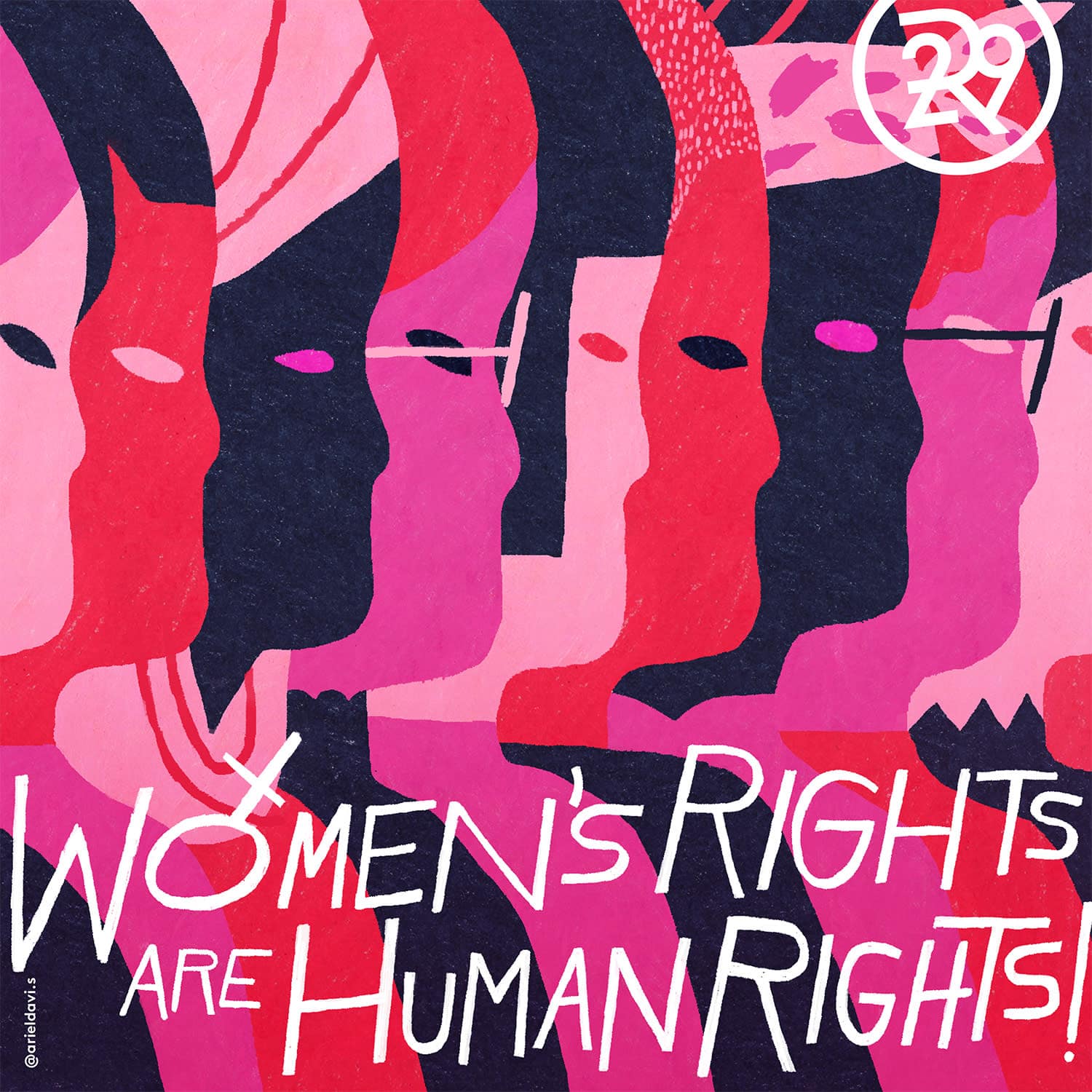
Design de Ariel Davis para a Refinery29 Women's March 2018 série de pôsteres.
Você poderia me falar sobre o seu dia a dia típico no trabalho? Como é a sua agenda?
Eu me levanto de manhã e tomo café em casa e o café da manhã em casa, o que é muito intencional, porque eu costumava ser o tipo de pessoa que se levantava, se vestia e saía correndo pela porta para tomar um café da Starbucks e comer um muffin de merda na minha mesa ou algo assim. Houve um período em que eu estava sendo muito exigente com o trabalho e percebi que não estava fazendo nenhum favor a mim mesmo. Eu não estava fazendo nenhum favor à empresa trabalhando dessa forma. Comecei a fazer café em casa e isso basicamente mudou minha vida.
Portanto, começo o dia com café e café da manhã em casa. É o momento de me concentrar e pensar no que quero fazer - como quero encarar o dia. Em seguida, chego e, normalmente, meu dia é dividido entre reuniões com a equipe que se concentram em inspiração, educação ou conversas que nos guiarão de forma criativa. Isso pode ser qualquer coisa, desde um brainstorming de novas maneiras de criar conteúdo de memes, ou fazemos reuniões de marca em que temos conversas facilitadoras sobre os valores da nossa marca.
Tem sido interessante mudar meu foco como líder de uma época em que eu era muito prático, participava de tudo e aprovava tudo. À medida que crescemos, ficou claro que isso não era escalável e não era o melhor para a equipe e sua criatividade. Mudei meu foco para pensar em como, como líder, posso inspirar a empresa - como posso compartilhar a visão?
Eu diria que um terço do meu dia é dedicado ao brainstorming, à solução de problemas com a equipe, à educação das pessoas; e provavelmente um terço do meu dia tende a ser dedicado a reuniões e ligações diferentes com pessoas criativas ou empreendedores, pessoas que são parceiros em potencial, seja para falar sobre projetos ativos nos quais estamos trabalhando ou para conhecer novas pessoas com as quais podemos querer colaborar. O restante do meu dia tende a ser dividido em reuniões mais executivas ou operacionais e assuntos administrativos por e-mail, coisas desse tipo.
Acho que, às vezes, para pessoas de fora da mídia digital, esse tipo de função, como diretor de criação ou diretor de arte, pode ser um pouco misteriosa. Se você não faz parte do setor, você se pergunta: "O que é necessário para isso? Como você realmente garante que a marca tenha uma aparência consistente?"
Temos uma missão e valores claros e todas essas coisas. E temos as diretrizes básicas da marca, mas estamos sempre nos reunindo. Faço esses compartilhamentos de referência trimestrais em que todos da equipe de criação trazem coisas que os inspiram.
É um desafio interessante - quando você tem uma grande equipe e quando há muito trabalho saindo pela porta todos os dias - manter essa consistência sem que ela se torne obsoleta. Algumas marcas são tão consistentes que se tornam entediantes.
Mesmo que eu veja um de seus artigos no Facebook, sempre sei que é o Refinery29 imediatamente. Você tem uma aparência. E, ainda assim, não parece que você está vendo apenas o mesmo conteúdo.
Basicamente, trata-se de educação, compartilhamento de inspiração com todos e, em seguida, a realização desses brainstorms focados em diferentes pontos em que podemos melhorar o trabalho. Fazemos esses e-mails às sextas-feiras sobre o melhor trabalho da semana e também fazemos uma reunião mensal em que nos reunimos para comemorar, educar e falar sobre o que é incrível, o que tentamos e o que aprendemos, além de tudo o que realmente precisamos focar e lembretes amigáveis sobre as coisas que as pessoas precisam levar em consideração. É uma rede em constante evolução que mantém você unido.
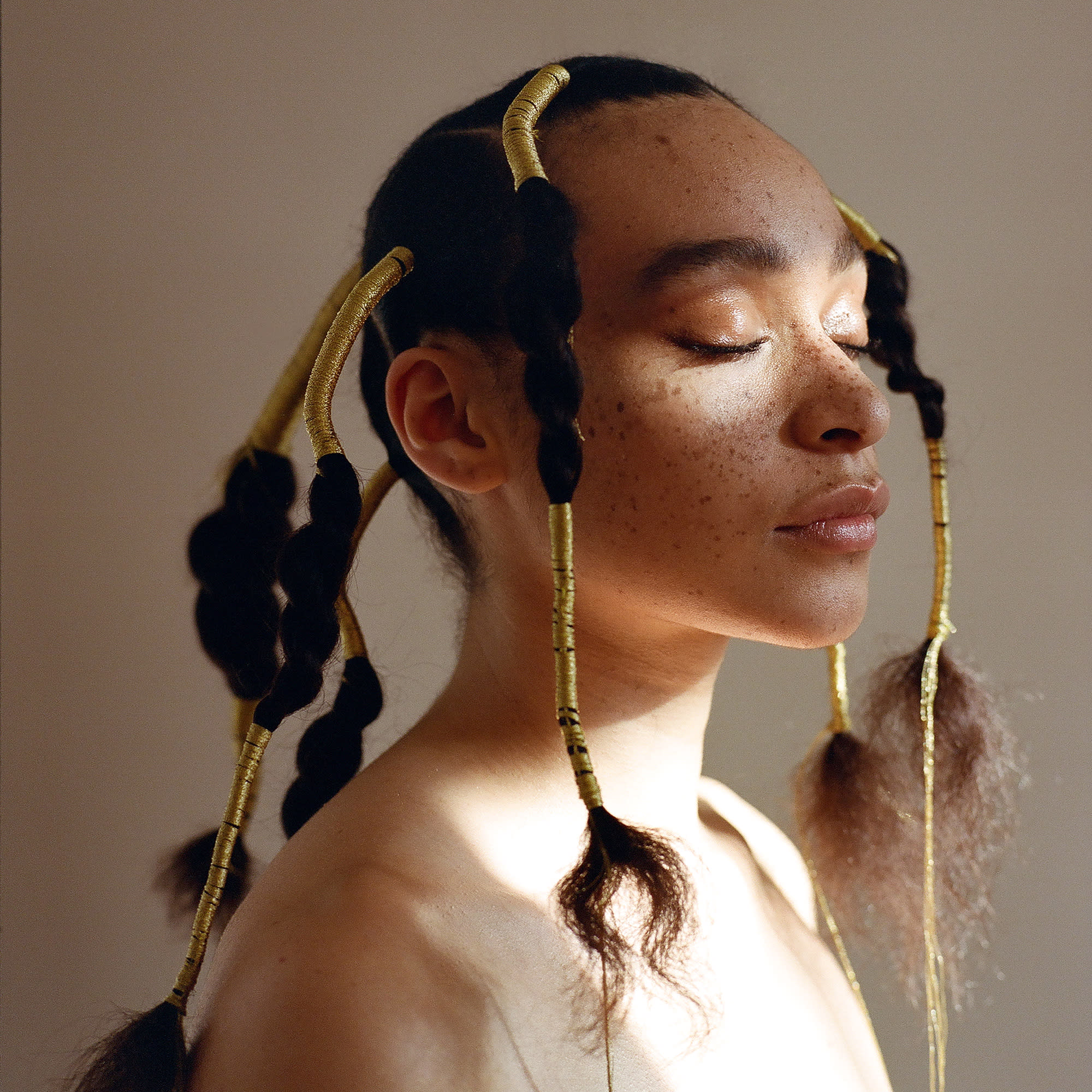
Foto de Lily Bertrand-Webb para a Recurso da Refinery29 sobre a depilação de cabelos africanos.
Você mencionou que às vezes contrata pessoas pelo Instagram. Como você costuma encontrar novos criadores de conteúdo para trabalhar?
Isso acontece de várias maneiras, mas encontramos muitos talentos no Instagram. Semelhante aos compartilhamentos de referência que fazemos para obter inspiração, outro dia todos da nossa equipe de fotografia vieram e pedimos que trouxessem diferentes fotógrafos que os inspiraram. Parte disso é apenas compartilhar a inspiração uns com os outros, e acho que todos em nossa equipe estão analisando as coisas individualmente. Além disso, muitas pessoas entram em contato conosco e nos enviam seus trabalhos. Você está sempre visitando museus e galerias e também está na cidade.
Se alguém quiser trabalhar com você ou ser destacado por você, que tipo de argumento de venda você gostaria de ver?
Estamos sempre à procura. Sei que pode parecer uma resposta genérica, mas sempre tendemos a procurar pessoas que tenham um ponto de vista realmente único, que estejam realmente incorporando a si mesmas. Às vezes, vejo portfólios em que a pessoa está claramente tentando agradar a várias estéticas diferentes, e isso pode funcionar para alguns clientes. Se eu estiver contratando alguém para a equipe ou se estivermos procurando alguém para colaborar, quero ver um ponto de vista forte e singular e algo que pareça verdadeiro para essa pessoa - como se ela tivesse algo que estivesse tentando expressar ao mundo.
Fora isso, basta manter os argumentos de venda curtos e personalizá-los de acordo com a pessoa ou a marca para a qual você está se dirigindo. Eu sempre digo isso às pessoas quando elas vão a entrevistas também. É melhor ir a menos entrevistas, ou fazer um pitch para menos pessoas, e torná-lo mais focado e fazer um pouco mais de pesquisa para que você possa destacar algo especificamente.
Se você começar uma apresentação para o cliente ou para a publicação com algo de que goste, aprecie ou em que se inspire - seja uma coisa específica que ele tenha feito ou apenas o seu estilo de vida -, isso chamará mais a atenção do que simplesmente dizer: "Aqui estão todas as minhas realizações e você deveria me contratar". É melhor dizer: "Aqui está o que me chama a atenção no que você está fazendo, e aqui está como posso colaborar com você". Isso é algo que eu procuro.
A Refinery29 tem essa excelente combinação de eventos atuais, cobertura política, mas também de moda e beleza. Quando você começou, não fazia esse conteúdo de atualidades, fazia? Como isso passou a fazer parte da marca?
Não tivemos isso no início. Começamos muito, muito concentrados. Acho que quando você começa pequeno, precisa estar concentrado.
À medida que desenvolvemos a marca, incorporamos mais do que nos interessava e também do que nosso público queria de nós. Até mesmo o salto original, que agora não parece ser um salto, de moda para beleza. Lembro que Christene [Barberich, editora-chefe da Refinery29] e eu trabalhamos em uma história e a testamos. Colocamos no boletim informativo e foi nossa história de maior sucesso do mês, o que ajudou.
Quando entramos na área de bem-estar e sexo, foi a mesma coisa. Era como se disséssemos: "O que você acha que está faltando na abordagem?" Na época, sentimos que não havia muito conteúdo sobre bem-estar que abordasse o assunto de forma informativa, mas que não fosse estéril, que fosse acessível. Com o sexo foi semelhante. Pensamos: "Bem, todo o conteúdo sobre sexo que existe é supermédico ou tudo é 'piscadela, piscadela, nudge, nudge'. É super heteronormativo. É muito focado em agradar um homem, em vez de agradar as mulheres". Fizemos alguns experimentos com sexo e vimos que essas eram, de longe, nossas histórias de maior sucesso.
Muitas vezes, nas publicações femininas, ou você lê um tabloide de celebridades ou lê The New Yorker, você leu The New York TimesE queríamos desafiar isso. Quando começamos a abrir as portas, a crescer e a ter flexibilidade para adicionar essas novas categorias, pensamos: bem, queremos realmente abordar 360 graus da vida de uma mulher. O fato de que você pode realmente se preocupar com as eleições de meio de mandato e também querer comprar um par de botas brilhantes. Nós temos muitas coisas. Somos complexas. Somos multifacetados. Temos todos esses interesses diferentes, e não há razão para que essas coisas tenham de ser colocadas em caixas bem arrumadas e distantes umas das outras.
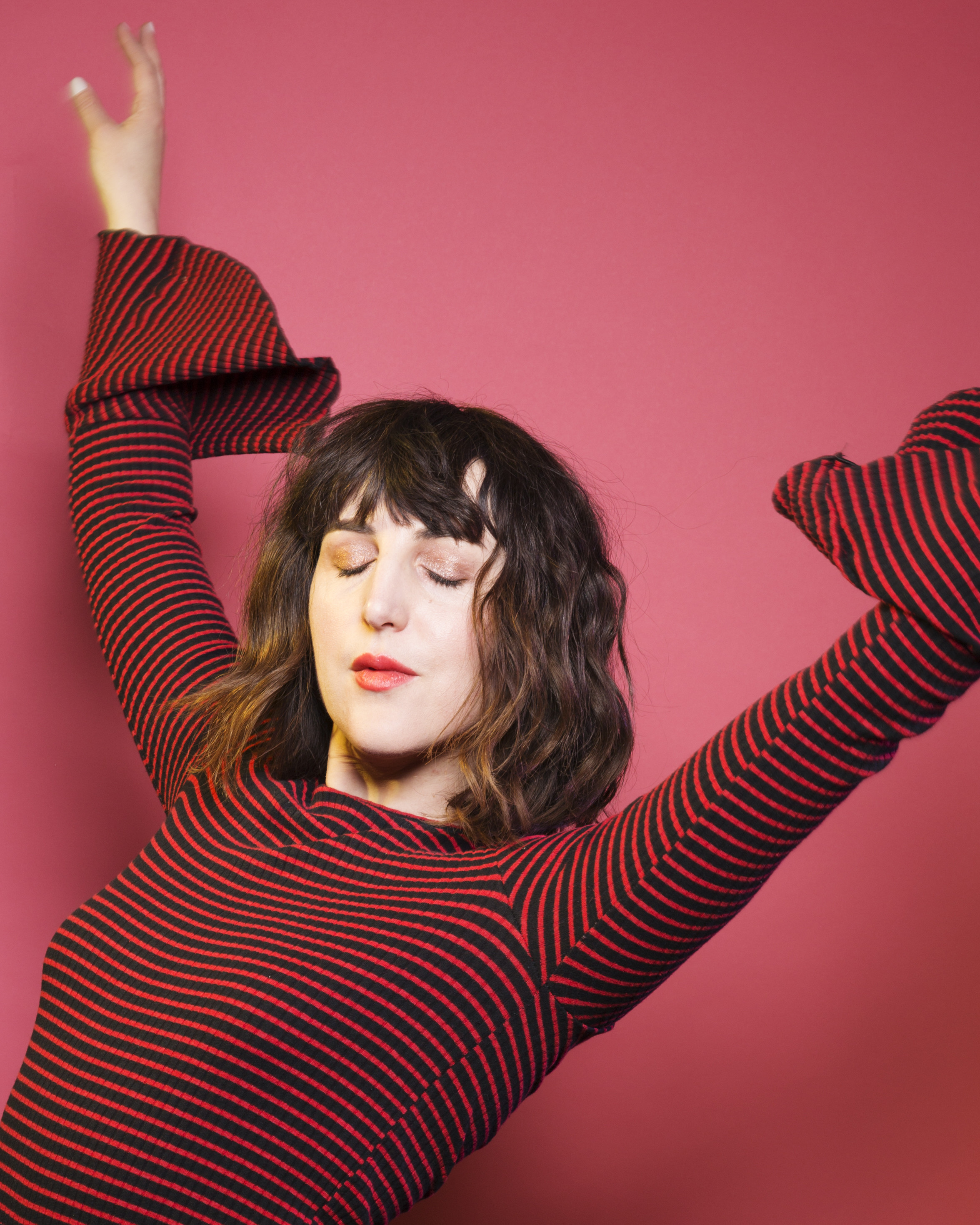
Todos os retratos de Piera fotografados por Erin Yamagata e cortesia da Refinery29.
Mais entrevistas para você ler:
O editor de fotos do Buzzfeed, Gabriel H. Sanchez, fala sobre como você pode ser descoberto
Elizabeth Renstrom, editora de fotos da revista Vice, quer magia
Como fazer com que sua fotografia seja publicada na revista Bon Appetit
